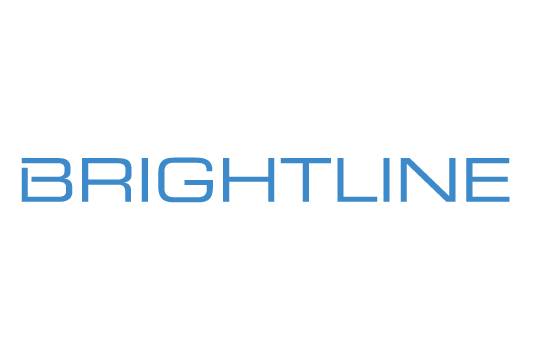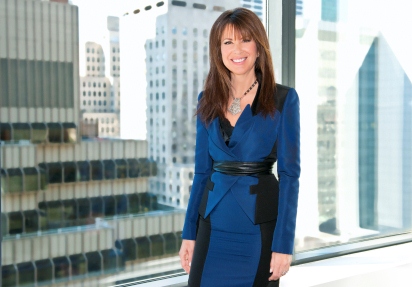As Video’s Popularity Continues to Rise and Screens Converge, New Tools are Needed to Fully Capitalize -- Jacqueline Corbelli

As autumn draws near and this year’s final upfront results roll in, we’re seeing a slightly softer TV ad market than in past years. It’s clear from the sheer magnitude of TV spending that the biggest screen is a persistent mainstay and high priority. However, changes playing out this year also hint of desire among marketers to stay more flexible in the way they approach TV.
The explanation is likely rooted in the continuing growth of TV programs being watched on Internet connected devices; that suggests “TV” and “Digital” can no longer be viewed as completely separate media investments. The rise in consumption of TV programming across screens along with the quickening rate of overall connected TV adoption is making a true multi-screen video ad strategy feel more and more important to brands.
Some developments over the past year are shedding further light on video advertising’s future and the opportunity connected devices bring marketers to enhance consumers’ experience with their favorite programming and brands. There is strong evidence of a gradual yet steady march in the ad world to a full link up of digital rich video advertising with the new premium content ad opportunity that connected TVs now represent:
For one, the Internet is feeding TV consumption in an increasingly seamless way -- 34% of U. S. homes already own a smart TV, 20% own a streaming device and a whopping 62% own a gaming console, all of which are being used, in part, to stream TV from the Internet. In addition, according to Parks Research, 60% of connected TV homes are watching TV programs via the Internet, and a recent report from eMarketer states that, “. . .in 2015, the majority of US Internet users will access the Internet through a connected TV” [1].
On top of the impact that the pure growth in Internet video streaming on connected TVs being observed will likely have on the video ad strategy, the relationship between TV and tablet viewing is also getting closer. As of Q1 2014, Parks Research reports that ownership rates of tablets have quadrupled to 61% of broadband homes, with 41% making regular use of TV apps. Together these trends signal an important opportunity for advertisers, networks and TV providers alike to deliver richer ad experiences to audiences across screens.
And, in a separate development this summer, NBC Universal had a relatively strong showing in the Upfronts highlighting the potential impact that changing viewing habits may already be having on future TV spending. NBCU demonstrated the appeal that cross-screen ad opportunities hold for marketers and their brands to reach TV audiences, efficiently and seamlessly across all. We should expect to see more requests for ad inventory that is bundled and delivered across screens in 2015 from brands and agencies seeking to better reach target TV audiences regardless of where they are watching their favorite programming.
A survey by eMarketer earlier this year reinforces the point: “75% of media planners are either planning for connected TV advertising opportunities now or will be this year” [2]. Another indication that in all that’s already changed about connected behaviors and adoption, it’s becoming less and less feasible to approach TV and digital as discreet by separate parts of a communication strategy driven by separate investment criteria.
In short, continued strong adoption of connected TV and the growth in Internet streamed video viewed across mobile and online screens looks like a wave just building to full strength, with TV representing the final leg of the Digital Media stool.
Not surprisingly, according to the Accenture Interactive CMO Study 2014, 42% of executives expect “managing change” to be the biggest barrier to implementing digital business initiatives. “The final piece that will make this transition possible will be the integration of online advertising capabilities that have already created new and innovative avenues for brands to successfully engage with consumers on the other screens” [3].
Just how popular video has become to us over the past few years is best revealed in this quote from Ron Harevo, president of video, AOL “… all screens are equal … we’re getting to a point where screen agnostic is the only way you can approach consumers, because they watch more videos on every platform … mobile and tablets are taking off and connected TV is the next new thing.”
As digital device usage continues to grow, it’s likely to become an important contributor to growth in video ad spending for years to come. OTT streaming will exceed $14 billion in 2018 according to PWC; this compares with $4.6 billion in 2014. It highlights well the strength and vitality of the US digital video ecosystem. “We’re in the midst of perfect storm conditions with audience growth consumer habits, device ad options, content availability and ad opportunities spinning in a virtuous circle,” said Harevo.
Converging workflows in a time of fundamentally changing behaviors and digital ad possibilities highlight the need for overcoming any limitations that current org design and/or business processes have on the ability to truly optimize on cross screen rich video ad strategy.
1. "The Evolution of Advanced TV Advertising Strategies." Parks Associates (2014)
2. "Connected TV Ads Important for Future--but Few Know How to Buy Them." eMarketer. 15 May 2014
3. "Content Kings: The Changing Landscape of TV Consumption." Digital Capital Advisors (2013)
Jacqueline Corbelli is the co-Founder, Chairman and CEO of BrightLine, an advertising and marketing firm, which creates and implements interactive TV (iTV) advertising strategies that engage target consumers in a two-way dialogue with brands, such as Unilever, GlaxoSmithKline, L'Oreal, American Express and Kellogg's. Accounting for 95 percent of all iTV activity, BrightLine is recognized as the market leader in exploiting the latest digital technologies to create interactive brand experiences for television viewers. Jacquie can be reached at jcorbelli@brightline.tv
marketing firm, which creates and implements interactive TV (iTV) advertising strategies that engage target consumers in a two-way dialogue with brands, such as Unilever, GlaxoSmithKline, L'Oreal, American Express and Kellogg's. Accounting for 95 percent of all iTV activity, BrightLine is recognized as the market leader in exploiting the latest digital technologies to create interactive brand experiences for television viewers. Jacquie can be reached at jcorbelli@brightline.tv
Check us out on Facebook at MediaBizBloggers.com
Follow our Twitter updates @MediaBizBlogger
The opinions and points of view expressed in this commentary are exclusively the views of the author and do not necessarily represent the views of MediaBizBloggers.com management or associated bloggers. MediaBizBloggers is an open thought leadership platform and readers may share their comments and opinions in response to all commentaries.


